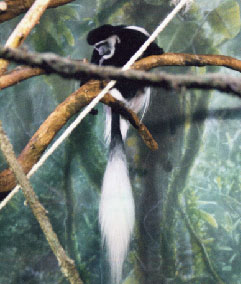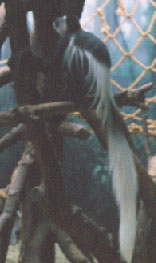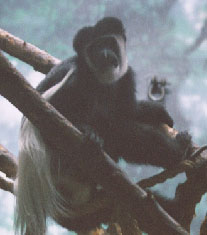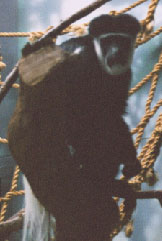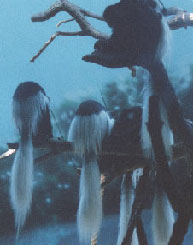The average body mass for an adult male Abyssinian black-and-white colobus monkey is around 14.5 kilograms, and for the female it is around 6.2 kilograms. This is a sexually dimorphic species. The pelage color is black with white hair encircling the face that goes down the back. The tail of this species is long and white colored. The infants are born all white then start turning at about 3 months. In the perineal region males have a white semicircle of hair and females have a white semicircle bisected by a black line. This species has a sacculated stomach to assist in the breakdown of cellulose.
